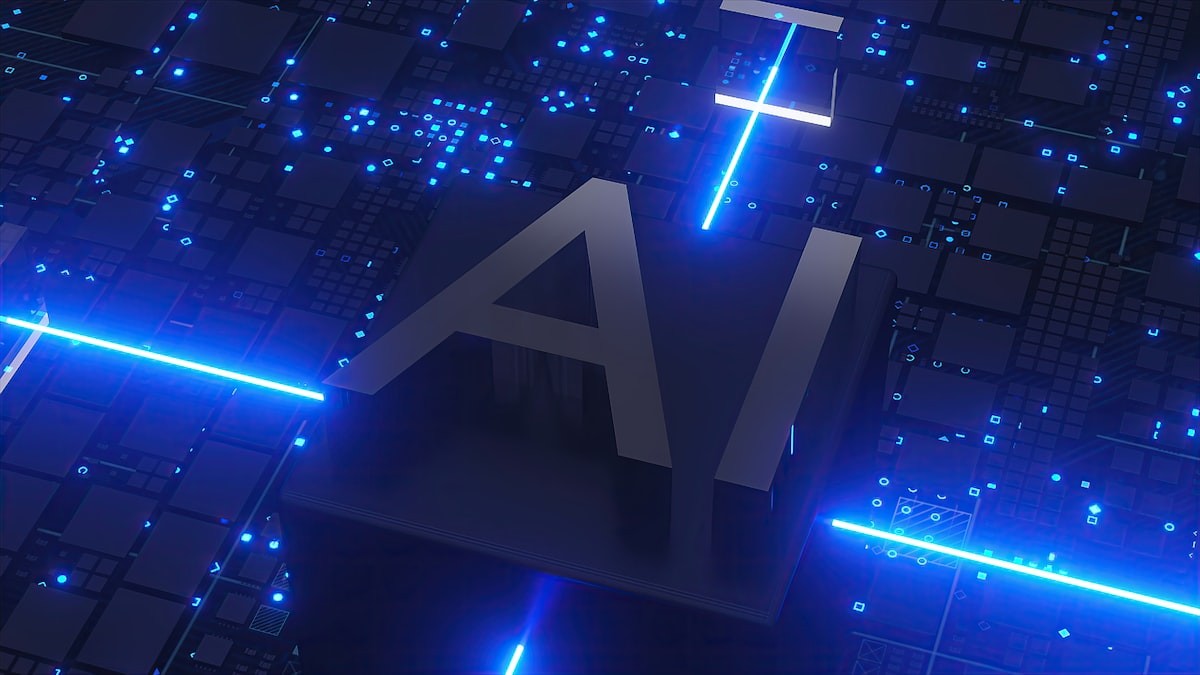Autonomous AI Agent: Revolutionizing Automation & Productivity
The rise of artificial intelligence (AI) has brought about numerous groundbreaking technologies, and among the most promising is the autonomous AI agent. These sophisticated systems are designed to operate independently, making decisions and taking actions based on their environment and predefined goals. This article delves into the world of autonomous AI agents, exploring their functionality, applications, current trends, and potential impact across various industries. Whether you're a seasoned AI professional or simply curious about the future of automation, this guide will provide a comprehensive overview of this transformative technology.
1. What is an Autonomous AI Agent?

Autonomous AI Agent: Revolutionizing Automation & Productivity - Image 1
At its core, an autonomous AI agent is an intelligent system capable of perceiving its environment, making decisions, and taking actions to achieve specific objectives without explicit human intervention. These agents leverage a combination of AI techniques, including machine learning, natural language processing (NLP), computer vision, and reinforcement learning, to understand their surroundings, reason about complex situations, and execute tasks effectively.
Key Characteristics of Autonomous AI Agents:
- Autonomy: The ability to operate independently and make decisions without constant human oversight.
- Perception: The capacity to perceive and interpret information from their environment through sensors, data feeds, and other input sources.
- Reasoning: The capability to process information, identify patterns, and make logical inferences to guide their actions.
- Learning: The ability to improve their performance over time through experience and feedback.
- Goal-Oriented: Designed to achieve specific objectives or tasks efficiently and effectively.
- Adaptability: The capacity to adjust their behavior in response to changing circumstances and unexpected events.
Difference Between AI Agents and Traditional Automation
While traditional automation relies on pre-programmed rules and workflows, autonomous AI agents exhibit a higher level of intelligence and adaptability. They can handle complex, unstructured tasks that require reasoning, decision-making, and learning, making them suitable for dynamic and unpredictable environments. Traditional automation is typically rigid, while AI agents are flexible and can adapt to new situations.
2. How Autonomous AI Agents Work
The functionality of an autonomous AI agent can be broken down into several key components:
- Perception: The agent gathers information from its environment through sensors, data feeds, or other input sources. This data is then processed to extract relevant features and patterns.
- Reasoning: The agent uses AI algorithms, such as machine learning models and knowledge graphs, to analyze the perceived information and make inferences about the current situation.
- Planning: Based on its reasoning, the agent develops a plan of action to achieve its objectives. This plan may involve a sequence of steps or decisions.
- Action: The agent executes the planned actions, interacting with its environment through actuators or other interfaces.
- Learning: The agent evaluates the outcomes of its actions and uses this feedback to improve its future performance. This learning process may involve reinforcement learning, supervised learning, or other techniques.
Core Technologies Powering Autonomous AI Agents:
- Machine Learning (ML): Enables agents to learn from data and improve their performance over time.
- Natural Language Processing (NLP): Allows agents to understand and process human language, enabling communication and interaction.
- Computer Vision: Enables agents to “see” and interpret images and videos, allowing them to perceive their environment visually.
- Reinforcement Learning (RL): Trains agents to make decisions in complex environments by rewarding desired behaviors.
- Knowledge Graphs: Provide a structured representation of knowledge that agents can use to reason and make informed decisions.
3. Practical Applications Across Industries
Autonomous AI agents are finding applications in a wide range of industries, transforming how businesses operate and deliver value. Here are some notable examples:
- Healthcare: AI agents can assist doctors in diagnosing diseases, personalize treatment plans, and monitor patients' health remotely. They can also automate administrative tasks, freeing up healthcare professionals to focus on patient care. For example, AI-powered chatbots can provide preliminary medical advice and schedule appointments.
- Finance: AI agents can detect fraudulent transactions, manage investment portfolios, and provide personalized financial advice to customers. They can also automate tasks such as loan processing and risk assessment. Algorithmic trading platforms leverage AI agents to execute trades based on market conditions.
- Manufacturing: AI agents can optimize production processes, predict equipment failures, and control robots in manufacturing plants. They can also automate quality control tasks and improve supply chain management. Predictive maintenance systems use AI agents to identify potential equipment issues before they lead to downtime.
- Retail: AI agents can personalize shopping experiences, recommend products to customers, and manage inventory levels. They can also automate tasks such as order fulfillment and customer service. Chatbots and virtual assistants are increasingly used to provide customer support and answer product-related questions.
- Transportation: Autonomous vehicles, powered by AI agents, are revolutionizing the transportation industry. AI agents can also optimize traffic flow, manage logistics, and improve safety in transportation systems. Self-driving trucks and delivery drones are becoming increasingly common.
- Customer Service: AI-powered chatbots and virtual assistants handle customer inquiries, resolve issues, and provide personalized support, improving customer satisfaction and reducing operational costs. These agents can handle a large volume of inquiries simultaneously, providing 24/7 support.
4. Current Trends in Autonomous AI Agent Development (2024/2025)
The field of autonomous AI agent development is rapidly evolving, with several key trends shaping its future:
- Increased Autonomy and Adaptability: Agents are becoming more capable of operating independently and adapting to changing circumstances without human intervention. This is driven by advancements in reinforcement learning and other AI techniques.
- Integration with Edge Computing: Deploying AI agents on edge devices enables real-time processing and decision-making, reducing latency and improving responsiveness. This is particularly important in applications such as autonomous vehicles and industrial automation.
- Explainable AI (XAI): There's a growing emphasis on making AI agents more transparent and explainable, allowing users to understand how they make decisions. This is crucial for building trust and ensuring accountability.
- Multi-Agent Systems: Developing systems that involve multiple AI agents collaborating to achieve common goals is gaining traction. This approach enables more complex and sophisticated solutions.
- AI Agent Frameworks and Platforms: The emergence of specialized frameworks and platforms is simplifying the development and deployment of AI agents. Examples include AutoGen by Microsoft and open-source libraries for reinforcement learning.
5. Benefits of Implementing Autonomous AI Agents
Implementing autonomous AI agents offers numerous benefits for businesses and organizations:
- Increased Efficiency and Productivity: AI agents can automate repetitive tasks, freeing up human workers to focus on more strategic and creative activities.
- Improved Accuracy and Consistency: AI agents can perform tasks with greater accuracy and consistency than humans, reducing errors and improving quality.
- Reduced Costs: By automating tasks and optimizing processes, AI agents can help businesses reduce operational costs and improve profitability.
- Enhanced Decision-Making: AI agents can analyze large amounts of data and provide insights that can inform better decision-making.
- Improved Customer Experience: AI agents can personalize customer interactions and provide faster, more efficient service, improving customer satisfaction.
- Scalability: AI agent-powered solutions are easily scalable to meet growing demands.
6. Challenges and Limitations
Despite their potential, autonomous AI agents also face several challenges and limitations:
- Complexity: Developing and deploying AI agents can be complex and require specialized expertise.
- Data Dependency: AI agents rely on large amounts of high-quality data to learn and perform effectively.
- Ethical Concerns: The use of AI agents raises ethical concerns related to bias, fairness, and accountability. Ensuring responsible AI development and deployment is crucial.
- Security Risks: AI agents can be vulnerable to security threats, such as adversarial attacks and data breaches. Robust security measures are needed to protect AI systems.
- Lack of Explainability: Some AI models, such as deep neural networks, can be difficult to interpret, making it challenging to understand how they make decisions.
- Limited Generalization: AI agents often struggle to generalize their knowledge and skills to new and unfamiliar situations.
7. Building and Deploying Autonomous AI Agents
Building and deploying autonomous AI agents involves several key steps:
- Define the Problem: Clearly define the problem you want to solve and the objectives you want to achieve with the AI agent.
- Gather Data: Collect and prepare the data needed to train the AI agent. Ensure that the data is high-quality and representative of the environment in which the agent will operate.
- Choose the Right AI Techniques: Select the appropriate AI techniques, such as machine learning, NLP, or computer vision, based on the problem you are trying to solve.
- Develop and Train the Agent: Develop the AI agent using appropriate frameworks and tools, and train it using the collected data. This may involve fine-tuning the agent's parameters and evaluating its performance.
- Test and Validate the Agent: Thoroughly test and validate the AI agent in a simulated or real-world environment to ensure that it performs as expected.
- Deploy and Monitor the Agent: Deploy the AI agent in its intended environment and continuously monitor its performance to identify any issues or areas for improvement.
Key Considerations for Successful Implementation:
- Start Small: Begin with a pilot project to demonstrate the value of AI agents and build internal expertise.
- Focus on Clear Objectives: Define clear and measurable objectives for the AI agent to ensure that it delivers tangible results.
- Address Ethical Concerns: Consider the ethical implications of using AI agents and take steps to mitigate potential risks.
- Invest in Training: Provide training to employees on how to work with and manage AI agents.
- Collaborate with Experts: Partner with AI experts to ensure that you have the necessary skills and resources to develop and deploy AI agents effectively.
8. The Future of Autonomous AI Agents
The future of autonomous AI agents is bright, with significant advancements expected in the coming years. As AI technology continues to evolve, we can expect to see AI agents become more intelligent, adaptable, and capable of solving complex problems in a wide range of industries. We can anticipate:
- More Sophisticated AI Models: Advancements in deep learning and other AI techniques will lead to more sophisticated and capable AI agents.
- Increased Integration with IoT Devices: AI agents will be increasingly integrated with Internet of Things (IoT) devices, enabling them to interact with the physical world in more meaningful ways.
- Greater Emphasis on Human-AI Collaboration: The focus will shift towards developing AI agents that can work seamlessly with humans, augmenting their capabilities and improving overall productivity.
- Wider Adoption Across Industries: AI agents will become more widely adopted across various industries, transforming how businesses operate and deliver value.
- New Ethical and Regulatory Frameworks: The development of new ethical and regulatory frameworks will be essential to ensure the responsible development and deployment of AI agents.
In conclusion, autonomous AI agents represent a transformative technology with the potential to revolutionize automation and productivity across industries. By understanding their capabilities, applications, and limitations, businesses can leverage AI agents to gain a competitive advantage and drive innovation. Ready to explore how autonomous AI agents can transform your business? Contact us today to learn more.
FAQ: Autonomous AI Agents
Q1: What are the key benefits of using autonomous AI agents?
Autonomous AI agents offer increased efficiency, improved accuracy, reduced costs, enhanced decision-making, and better customer experiences by automating tasks and optimizing processes.
Q2: In what industries are autonomous AI agents being used?
Autonomous AI agents are being used in healthcare, finance, manufacturing, retail, transportation, and customer service, among others.
Q3: What are the main challenges in developing and deploying autonomous AI agents?
The main challenges include complexity, data dependency, ethical concerns, security risks, lack of explainability, and limited generalization.
Q4: How do autonomous AI agents differ from traditional automation?
Autonomous AI agents can handle complex, unstructured tasks that require reasoning, decision-making, and learning, making them suitable for dynamic and unpredictable environments, unlike traditional automation which is rigid and pre-programmed.
Q5: What are some current trends in autonomous AI agent development?
Key trends include increased autonomy, integration with edge computing, explainable AI, multi-agent systems, and the emergence of specialized frameworks and platforms.


